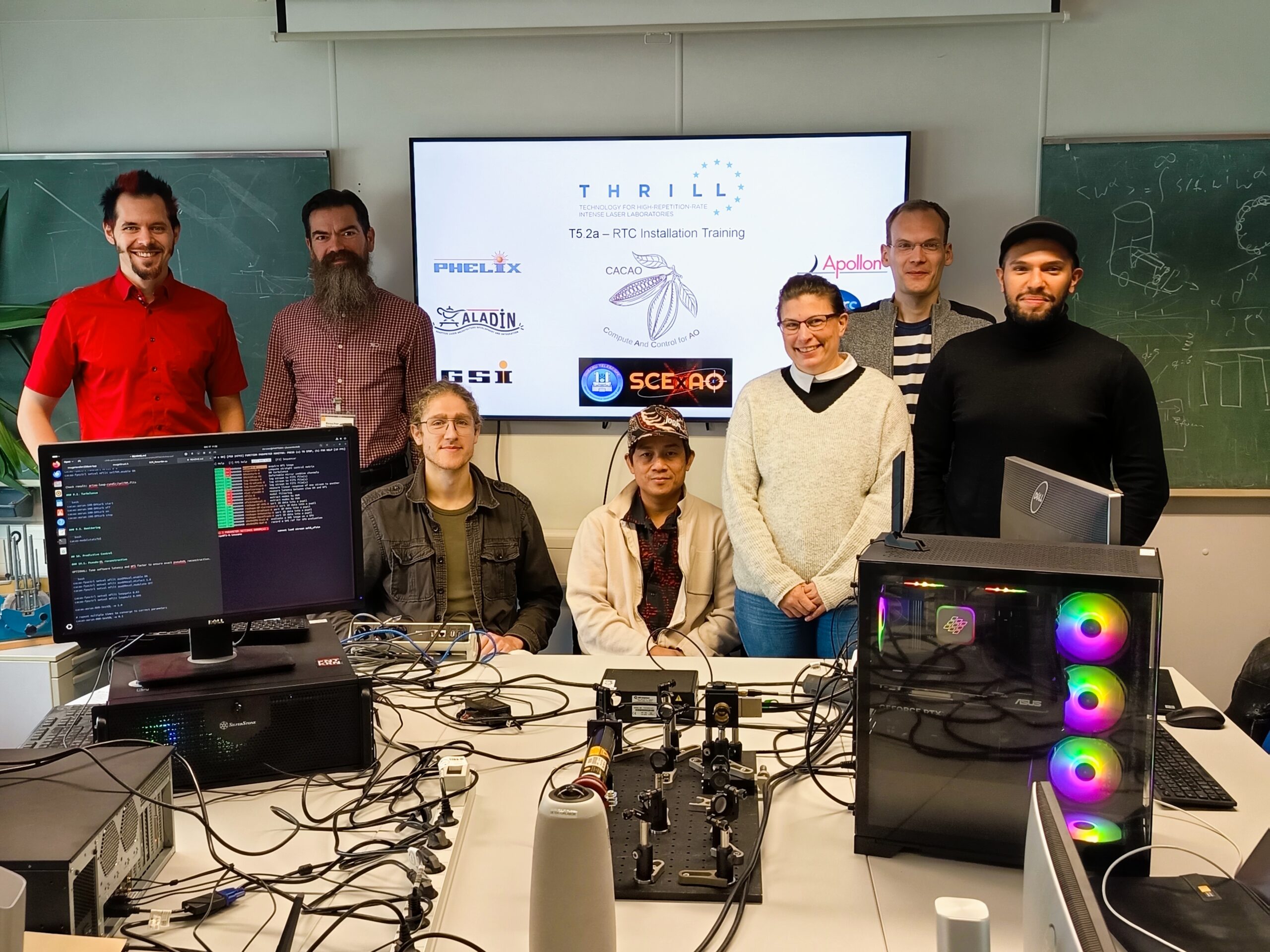Laser Engineers and Researchers teamed up for building the next generation of beam stabilization systems.
The THRILL project continues to advance the frontier of adaptive optics (AO) technology with a dedicated hands-on training on Real-Time Computer (RTC) installation, held at GSI Helmholtzzentrum für Schwerionenforschung in Darmstadt, Germany. In mid-October, experts and researchers from leading European laser facilities came together for a week to learn how to set up the computational backbone required for real-time adaptive optics (RTAO) in high-power laser systems.
This initiative builds directly upon the achievements of THRILL Task 5.2a, which pioneered the first-ever implementation of a RTAO system in a multi-petawatt laser – the Apollon Laser in France[1]. The Apollon RTAO (ARTAO) system has since inspired a growing number of institutes across Europe to adopt the technology, aiming to achieve higher stability and repeatability in laser-plasma experiments.
At the heart of ARTAO lies CACAO (Compute And Control for Adaptive Optics), an open-source AO software framework developed by the SCExAO team at the Subaru Telescope, Hawaii[2]. Originally designed for astronomical instrumentation such as exoplanet imaging, CACAO was adapted within THRILL for the unique demands of high-power laser operation. However, deploying CACAO requires a capable and precisely configured real-time computing environment – a challenging task that the GSI training set out to demystify.
To address this need, GSI hosted an on-site training session, bringing together two participants from EuXFEL, two from Apollon/CNRS, one from ELI-NP, and one from GSI itself. The session was led by Jonas Ohland, Task Leader of THRILL Task 5.2a and the original developer of the ARTAO system. Over the course of the week, participants collaboratively installed and configured RTCs for their respective facilities, gaining both theoretical understanding and practical experience.
“It’s exciting to see the growing interest in this technology,” says Jonas Ohland. “Real-Time Adaptive Optics is key for the next generation of laser beam control, improving reliability, repeatability, and experimental performance. Beyond laser-plasma applications, it’s also a cornerstone technology forInertial Confinement Fusion, and will play a central role in our newly founded Adaptive Laser Architecture Development and INtegration (ALADIN) group.”
The training represents an important milestone in THRILL’s dissemination and knowledge-sharing activities. By equipping multiple institutes with the skills to set up and operate real-time AO systems, the community moves a step closer to making RTAO a standard tool in high-power laser science. This collaborative, hands-on approach exemplifies the spirit of THRILL: fostering open exchange and accelerating innovation through shared expertise.
Photo: Participants of the RTC installation training at GSI celebrate the successful setup of real-time computers across all institutes’ systems.
[1] J. B. Ohland et al., “Apollon Real-Time Adaptive Optics: astronomy-inspired wavefront stabilization in ultraintense lasers,” High Power Laser Science and Engineering, vol. 13, p. e29, 2025. doi:10.1017/hpl.2025.16
[2] O. Guyon, et al., “Adaptive optics real-time control with the compute and control for adaptive optics (Cacao) software framework,” Proc. SPIE 11448, Adaptive Optics Systems VII, 114482N (13 December 2020); https://doi.org/10.1117/12.2562822



